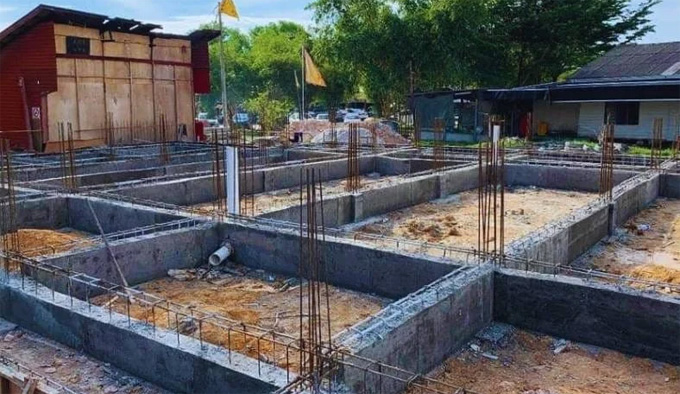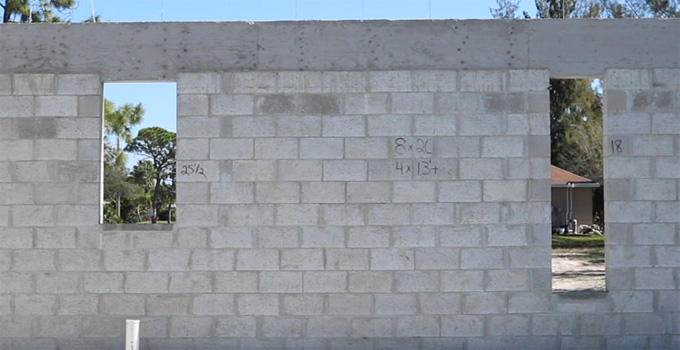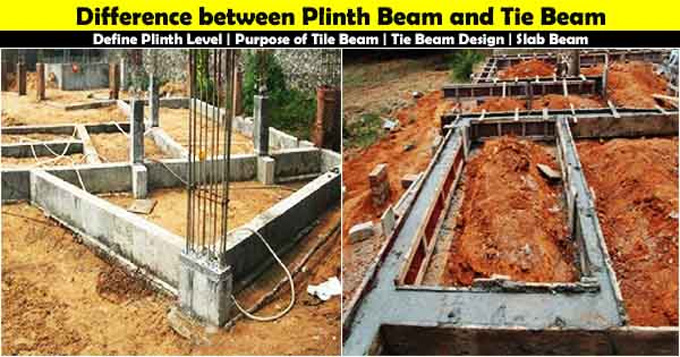
Differences Between Tie-Beam and Plinth Beam in Construction

The plinth beam has been constructed between the wall and foundation structure, which involves the distribution of the wall’s weight over the foundation structure. The plinth beam has been installed to provide structural support to the building. In addition, the overall load has been distributed to the foundation structure of the building with the use of the plinth beam.

In addition, the plinth beam has also been used to elevate the building structure above the soil level. This application helps to protect the building structure from moisture, seismic forces and also from termite infestation.
Effectiveness of the plinth beam in the construction project
Distribution of the load
The uniform distribution of the column load has been ensured by the use of the plinth beam in the building structure, which helps to prevent the settlement of the building.
Providing stability
The plinth beam helps to strengthen the building foundation, thus providing stability to the building structure.
Preventing dampness
The plinth beam helps to form a barrier against the moisture, thus, the plinth beam helps to protect the building structure from dampness and the growth of mould.
Increasing structural stability
The extra support against stresses has been provided by the plinth beam, which improves the structural stability of the building.
Preventing cracks
The plinth beam helps to prevent cracks from spreading, thus maintaining the structural integrity of the building.
Reducing the risk of failure
The plinth beam can also resist the lateral forces, which minimises the risks of failure during adverse conditions.
Minimising maintenance requirements
The plinth beam helps to minimise the structural strain, which significantly reduces the requirement for repair or maintenance.
Concept about the tie beam

The tie beam helps to strengthen the connection among the structural members of the building. The tie beam helps to connect the two columns in the building structure, thus, the tie beam provides additional support to the foundation's structure of the building. The tie beams have been installed in the building structure, which is located in earthquake-prone areas, and help to maintain the structural integrity of the buildings.
Effectiveness of the tie beam in the construction projec
Increasing structural stability
The tie beams help to connect the vertical columns of the building structure, which helps to prevent the column movement, thus reducing the structural damage to the building.
Increasing foundation strength
The settling issues have been reduced by using the tie beam in the foundation, which is appropriate for the house construction on the loose soil.
Save future costs
The tie beam helps to prevent the risks of foundation shifts, thus saving the costs related to the structural repair of the building.
Appropriate for smaller home construction
The durability of the house has been increased with the use of the tie beam without any kind of cost increases, which is appropriate for the smaller home construction.
Key differences between the plinth beam and the tie beam
Based on the location
The plinth beam has been located at the plinth level. On the other hand, the tie beam connects the columns at the higher level.
Based on the primary purposes
The primary purpose of the plinth beam is to distribute the building’s load and protect the building foundation. On the other hand, the primary purpose of the tie beam is to resist the lateral forces.
Based on the load-bearing capacity
The plinth beam helps to distribute the wall’s load over the foundation structure, whereas the tie beams help to carry the axial compression and help to transfer the structural loads.
Based on the connection purpose
All the columns in the building structure have been connected with the help of the plinth beam. On the other hand, only two or more columns or rafters can be connected with the help of the tie beams.
Based on the crack prevention
The plinth beam is involved in the prevention of cracks from the foundation structure to the walls. On the other hand, the tie beam helps to break the length of the columns in the building structure.
Based on the load transmission ability
The structural loads can be horizontally distributed at the ground level by using the plinth beam. On the other hand, the load has been transferred among the rafters or columns by the tie beams.
Based on the height above the floor
The plinth beam has been constructed at the plinth level or the ground level, whereas the tie beam has been constructed at the higher levels of the building structure.
Based on the structural stability
The plinth beam helps to distribute the building’s load more evenly, thus improving the building’s stability, whereas the tie beam enhances the building’s stability by connecting the rafters or columns of the building structure.
To learn more, watch the following video tutorial.
Video Source: Dr. Chirag N. Patel
Based on the deflection control ability
The plinth beam helps to reduce the deflection, thus maintaining the structural integrity of the building. On the other hand, the tie beam also contributes to the reduction of the deflection in the building structure.
Based on the usage in the roof trusses
The plinth beam is not used in the roof trusses in general. Whereas, the tie beam has been used in the roof trusses.


